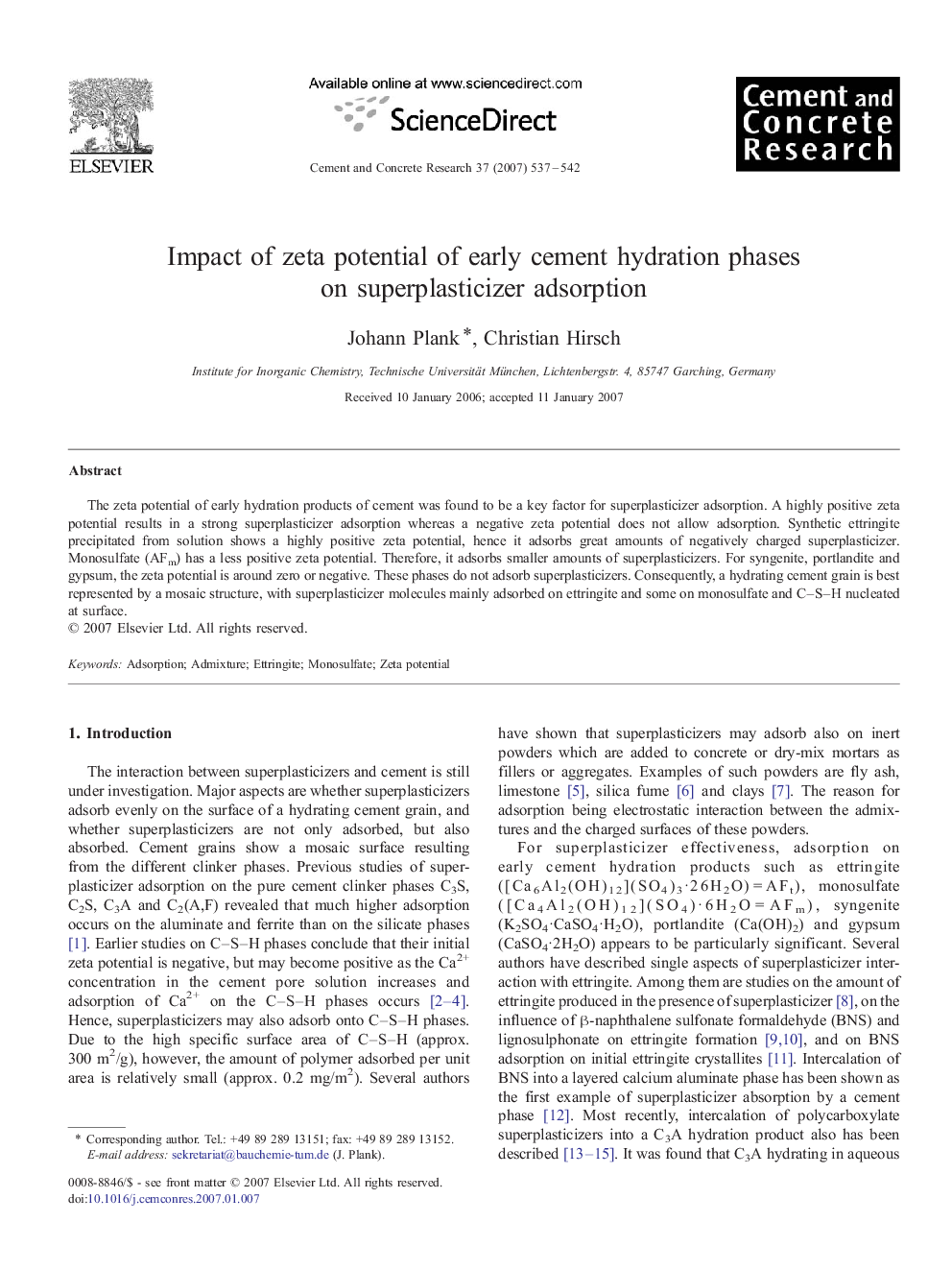| Article ID | Journal | Published Year | Pages | File Type |
|---|---|---|---|---|
| 1457785 | Cement and Concrete Research | 2007 | 6 Pages |
The zeta potential of early hydration products of cement was found to be a key factor for superplasticizer adsorption. A highly positive zeta potential results in a strong superplasticizer adsorption whereas a negative zeta potential does not allow adsorption. Synthetic ettringite precipitated from solution shows a highly positive zeta potential, hence it adsorbs great amounts of negatively charged superplasticizer. Monosulfate (AFm) has a less positive zeta potential. Therefore, it adsorbs smaller amounts of superplasticizers. For syngenite, portlandite and gypsum, the zeta potential is around zero or negative. These phases do not adsorb superplasticizers. Consequently, a hydrating cement grain is best represented by a mosaic structure, with superplasticizer molecules mainly adsorbed on ettringite and some on monosulfate and C–S–H nucleated at surface.
